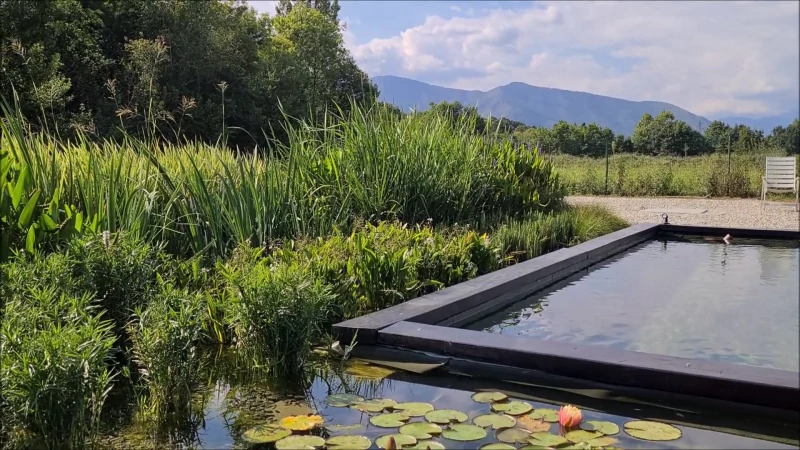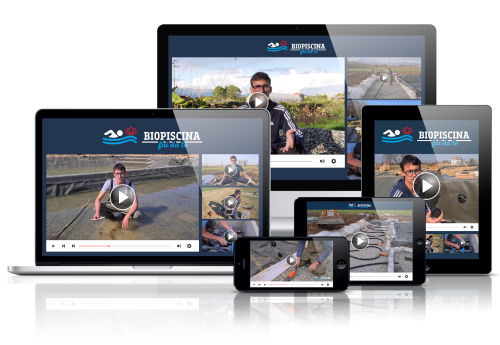
In order to have a successful natural pool you need to have a certain surface area dedicated to aquatic plants and then place a certain number of plants according to the surface area.
The aquatic plants should be the right species suitable for the context, climate, sun exposure and water characteristics.
In addition, in order to choose the right plants for your natural pool you should also consider the life cycle of each species during the four seasons.
For example, there are aquatic plants that grow mainly in spring and then reduce their development in summer. There are other plants that develop optimally during the warmer months of the year. Then there are other plants that also develop well in the autumn, while other plants go dormant. Finally, there are some plants that remain green even during the winter.
A mix of all these different categories of plants is important for a well functioning natural pool.
However, if you put only a few plants in a natural pool you risk having a poor result in terms of phyto-purification and thus ending up with algae in the pool. Read the article “The three myths to dispel about natural pools“.
Over the last few years I have received many requests from people who have had various problems in their natural pools built by companies or professionals who are supposed to be experts in the field, and so I have seen that very often unsuitable aquatic plants are inserted.
Here are some examples.
Regarding the plants for a natural pool, I have seen some glaring errors, such as the use of Phragmites australis which are marsh plants that infest everything and prevail over other plants. Over time, they can even pierce the liner of the natural pool.
I have seen the use of Typha latifolia, which are very pestuous plants that, at the end of the summer, release a lot of spores from their inflorescences, which are then obviously deposited in the water, making it very dirty. In addition, these spores, or seeds, will give rise to other plants all over the place, mixing with other plant species.
Then there are people who use plants chosen from books or articles on the internet, but because they do not know these plants well, they are typically planted in the wrong places, at the wrong depth.
For example, there are plants that need to be 15 cm deep, others 50 cm deep, and others that need a moist soil or low water.
I have seen cases of natural pools where 15 cm deep marsh plants have been planted one metre deep, and wetland plants planted in 15 cm of water, and again 15 cm deep marsh plants planted as waterless border plants.
If these plants are planted incorrectly, the result will obviously be a plant die-off.
I have even seen someone who recently planted plants in a natural pool that have been on the list of banned species throughout Europe for several years because they are very pests. You can imagine what the result will be in the following years.
I have also seen plants planted without taking the climate into account, so for example there are plants that are good in cool places near the mountains but that are not good in warm places near the sea.
For example, a plant that does well in a place with a cool climate will probably always be yellow or dry in a place with a hot climate due too the high temperatures, this leads to an aesthetically unpleasant result, and the phyto-purification does not work.
On the other hand, a semi-tropical plant that does well in a warm location such as Sicily, in southern Italy, will probably not survive during the winter in northern Europe.
In addition, there may be more acidic waters and more lime-rich waters, and the plants will obviously have to be chosen accordingly, otherwise there would be problems with plant establishment.
If you want to create a natural pool that really works, it is now possible with a do-it-yourself approach, without wasting money on novice designers, construction companies that normally do anything else and agronomists who do not know about aquatic plants.
You can achieve this with our DIY Natural Pool course, which includes our advice and assistance and a video course that we have made by filming all the stages of construction of our natural pool.
Find everything on this page!

